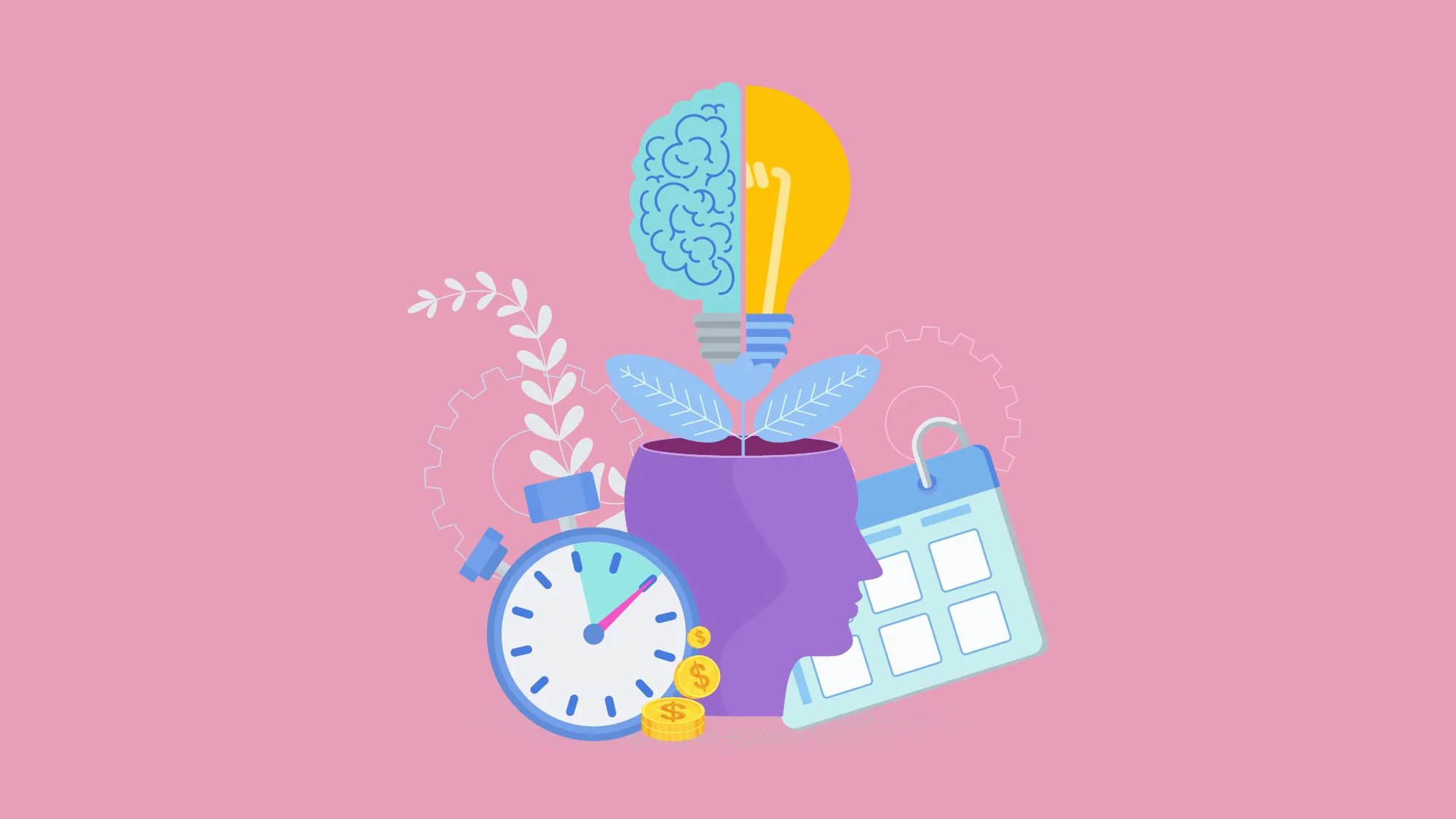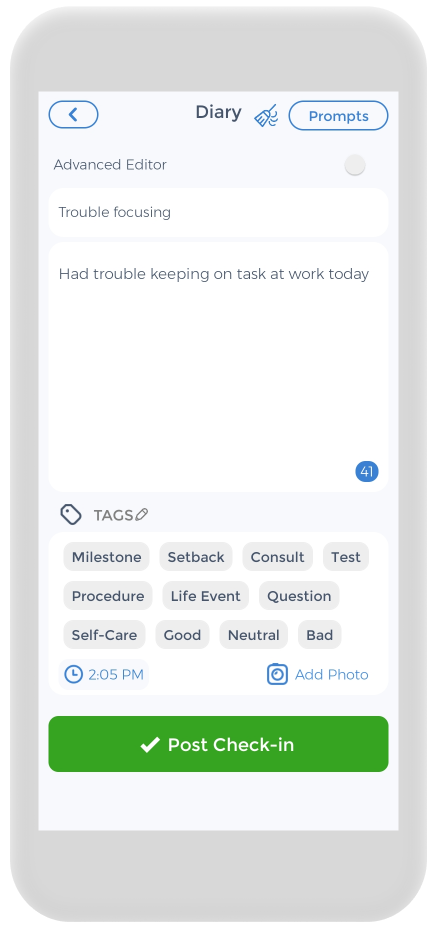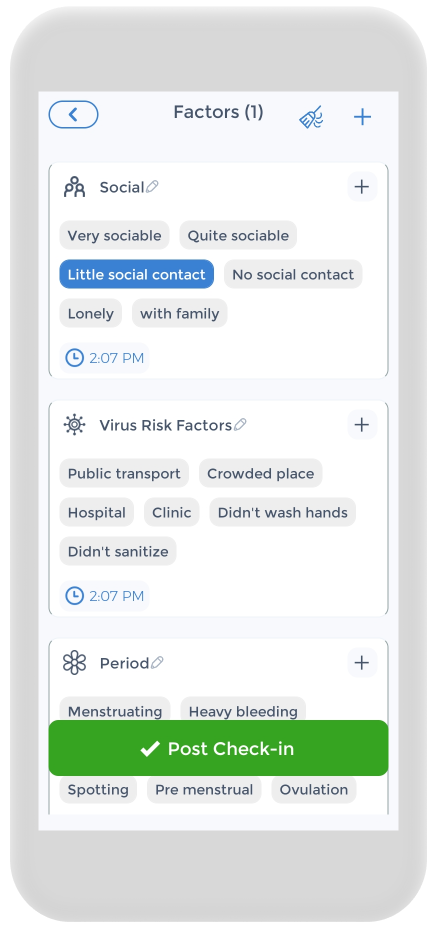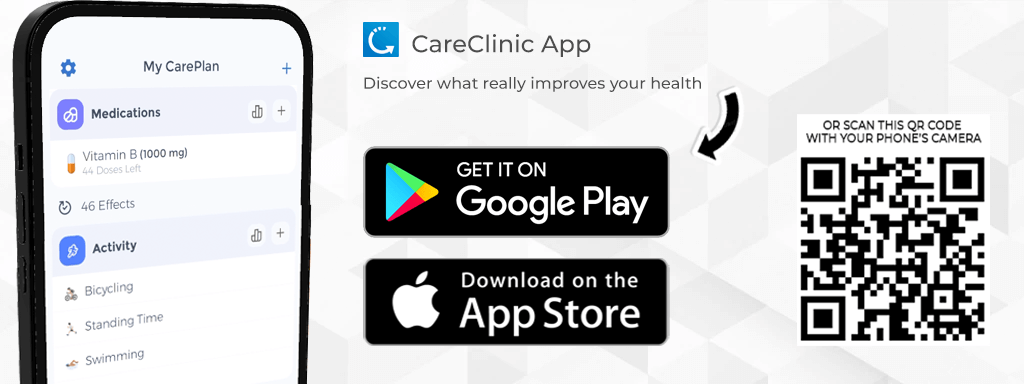
Attention Deficit Hyperactivity Disorder (ADHD) is a neurodevelopmental disorder that affects both children and adults. While commonly associated with hyperactivity and impulsivity, ADHD presents differently in women compared to men. Understanding the unique challenges and experiences of adult women with ADHD is crucial for accurate diagnosis and effective treatment. This article delves into the causes, symptoms, and treatment options for women with ADHD, aiming to provide comprehensive information to empower women in their journey towards managing the condition.
What is ADHD?
ADHD, which stands for Attention-Deficit/Hyperactivity Disorder, is a complex neurodevelopmental disorder that impacts the brain’s executive functions. These executive functions include attention, impulse control, and organization. Individuals with ADHD often struggle with maintaining focus, regulating their impulses, and staying organized. While ADHD is often first diagnosed in childhood, many women remain undiagnosed and only recognize their symptoms in adulthood.
Living with undiagnosed ADHD can be challenging for adult women, as it can affect multiple facets of their lives. Personal relationships may suffer due to difficulties in maintaining attention and managing impulsive behavior. Career and education paths may be hindered by the challenges of staying organized and following through on tasks. Additionally, the impact of ADHD on mental and physical health should not be overlooked.
The Basics of ADHD
ADHD is characterized by a persistent pattern of inattention, hyperactivity, and impulsivity that interferes with daily functioning. Inattention manifests as difficulty staying focused, being easily distracted, and having trouble following through on tasks. Hyperactivity refers to excessive and uncontrollable movement, such as fidgeting or restlessness. Impulsivity involves acting without considering the negative consequences first, often leading to impulsive decision-making or interrupting others.
interferes with daily functioning. Inattention manifests as difficulty staying focused, being easily distracted, and having trouble following through on tasks. Hyperactivity refers to excessive and uncontrollable movement, such as fidgeting or restlessness. Impulsivity involves acting without considering the negative consequences first, often leading to impulsive decision-making or interrupting others.
While these symptoms are central to ADHD, they may be less apparent in women compared to men, leading to underdiagnosis and undertreatment. Women with ADHD may experience more internal symptoms, such as racing thoughts or difficulty organizing their thoughts, making it harder to recognize the disorder. These gender differences in symptom presentation contribute to the challenges women face in getting an accurate diagnosis and appropriate support.
ADHD in the General Population
ADHD is a relatively common condition, affecting approximately 5-10% of children and around 2-5% of adults worldwide. However, the true prevalence of ADHD in women remains uncertain due to underdiagnosis and the subtlety of symptoms. In the past, ADHD was often thought to primarily affect young boys and adult men as a male disorder, leading to a higher likelihood of girls’ symptoms being overlooked or attributed to other factors such as anxiety or depression.
Research suggests that young girls and women with ADHD may exhibit less overt hyperactivity and impulsivity symptoms compared to their male counterparts. Instead, they may present with more internalized symptoms, such as daydreaming or difficulty organizing their thoughts. These differences in symptom expression can contribute to the underdiagnosis of ADHD in young girls and women, as their symptoms may not fit the stereotypical image of the disorder.
It is crucial to raise awareness about the unique challenges faced by women with ADHD and to advocate for improved recognition and support. By understanding the complexities of ADHD and its impact on women’s lives, we can work towards a more inclusive and comprehensive approach to diagnosis, treatment, and support for individuals of all genders.
The Gender Gap in ADHD Diagnosis
Despite growing awareness about ADHD, there is a significant gender gap in diagnosis rates. Women with ADHD often go undiagnosed until later in life, if at all. This delay in diagnosis can have profound implications for their well-being and quality of life.
Why Women are Often Overlooked
Women and girls tend to present with internalizing symptoms, such as daydreaming, excessive worrying, and emotional dysregulation. These symptoms may be mistakenly attributed to mood disorders or hormonal changes, resulting in missed opportunities for accurate diagnosis.
It is important to understand that ADHD symptoms can manifest differently in women compared to men. While hyperactivity and impulsivity are more commonly associated with ADHD, women tend to exhibit more subtle signs. For instance, they may struggle with organization, time management, and maintaining focus, which can be easily overlooked or dismissed as mere personality traits.
Moreover, societal expectations and gender stereotypes can further complicate the diagnosis process for women. Girls and women are often expected to be more attentive, organized, and socially adept, making it easier for their ADHD symptoms to be masked or attributed to other factors. This societal pressure to conform to gender norms can lead to a delay in seeking help and receiving an accurate diagnosis.
The Impact of Late Diagnosis
A late ADHD diagnosis can lead to years of struggling to understand one’s difficulties and feeling overwhelmed by unexplained challenges. Women with undiagnosed ADHD often face feelings of shame, low self-esteem, and self-blame. This delayed recognition can also hinder their ability to access appropriate ADHD treatment and support.
Without a proper diagnosis, women with ADHD may struggle to find effective coping strategies and accommodations to manage their symptoms. This can negatively impact their academic and professional performance, as well as their relationships and overall well-being.
Furthermore, undiagnosed ADHD can contribute to mental health issues such as anxiety disorder and depression. The constant struggle to meet societal expectations and the frustration of not understanding why certain tasks or responsibilities seem more challenging can take a toll on a woman’s mental and emotional health.
It is crucial to raise awareness about the gender gap in ADHD diagnosis and advocate for early identification and intervention. By recognizing and addressing the unique challenges faced by women with ADHD, we can ensure that they receive the support and resources they need to thrive and reach their full potential.
Causes of ADHD in Women
 The precise causes of Attention Deficit Hyperactivity Disorder (ADHD) in women are not fully understood. However, research suggests that ADHD has a multifactorial etiology, combining genetic and environmental factors.
The precise causes of Attention Deficit Hyperactivity Disorder (ADHD) in women are not fully understood. However, research suggests that ADHD has a multifactorial etiology, combining genetic and environmental factors.
ADHD tends to run in families, indicating a genetic component. Women with a family history of ADHD are at a higher risk of developing the condition themselves. However, the specific genes involved and their interactions with environmental factors are still under investigation.
In addition to genetic factors, environmental influences also play a significant role in the development of ADHD in women. Prenatal exposure to tobacco smoke, alcohol, or illicit drugs has been shown to increase the risk of ADHD. These substances can cross the placenta and affect the developing brain, leading to alterations in brain structure and function that may predispose individuals to ADHD.
Maternal stress during pregnancy has also been implicated as a potential environmental risk factor for ADHD. High levels of stress hormones, such as cortisol, can impact fetal brain development and increase the likelihood of developing ADHD. Premature birth and low birth weight, which are often associated with maternal stress, have also been linked to an increased risk of ADHD.
It is important to note that while genetic and environmental factors contribute to the development of ADHD, they do not guarantee the development of the disorder. Many individuals with genetic and environmental risk factors do not develop ADHD, highlighting the complex nature of the disorder and the need for further research.
Recognizing the Symptoms of ADHD in Women
Identifying ADHD symptoms in women can be challenging, as they often present differently in more women than in men. Recognizing these unique manifestations is crucial for timely intervention and support.
ADHD, or Attention-Deficit/Hyperactivity Disorder, is a neurodevelopmental disorder that affects both children and adults. While it is commonly associated with hyperactivity and impulsivity, it is important to note that ADHD symptoms can vary greatly between individuals. In women, these symptoms may manifest in distinct ways, making it essential to understand the specific signs to ensure accurate diagnosis and appropriate treatment.
Common Symptoms in Understanding ADHD in Women
Women with ADHD may experience chronic disorganization, difficulty prioritizing tasks, and challenges with time management. They often struggle with maintaining sustained attention and may daydream frequently. These difficulties can impact various aspects of their lives, including work, relationships, and personal well-being.
In addition to these cognitive symptoms, women with ADHD may exhibit emotional dysregulation. This can manifest as intense mood swings, where they may go from feeling happy to sad or angry within a short period. They may also experience heightened sensitivity to criticism or rejection, often taking things personally and feeling deeply affected by negative feedback.
Furthermore, women with ADHD may face specific challenges related to hormone fluctuations during their menstrual cycle. Hormonal fluctuations during different phases of the menstrual cycle can exacerbate ADHD symptoms, leading to increased difficulties with focus, attention, and emotional regulation. These cyclical changes can further complicate the identification and management of ADHD in women.
How Symptoms Differ from Men and Understanding ADHD in Women
Compared to their male counterparts, women with ADHD may display fewer externalizing behaviors, such as impulsive actions or disruptive behaviors. Instead, they may present with internalizing symptoms, such as chronic self-doubt, excessive worrying, difficulty focusing, and heightened anxiety.
Due to societal expectations and gender norms, women with ADHD may develop coping mechanisms that mask their symptoms. They may become experts at hiding their difficulties, putting up a facade of competence and appearing organized on the surface. This can lead to the underidentification and underdiagnosis of ADHD in women, as their struggles may be dismissed or attributed to other factors.
It is important to recognize that ADHD is not solely a childhood disorder and can persist into adulthood. However, the symptoms can change and evolve over time, making it even more challenging to identify and diagnose ADHD in adult women. Healthcare professionals and individuals alike must be aware of these gender-specific differences to ensure accurate assessment and appropriate support.
In conclusion, recognizing the symptoms of ADHD in women requires a comprehensive understanding of how these symptoms may differ from those typically seen in men. By being aware of the unique manifestations and challenges faced by women with ADHD, we can facilitate early intervention and provide the necessary support for improved quality of life.
The Impact of ADHD on Women’s Lives
ADHD, or Attention-Deficit/Hyperactivity Disorder, is a common neurodevelopmental disorder, that can significantly impact various aspects of a woman’s life. It affects personal relationships, career and education, and both mental health and physical health.
Personal Relationships
Women with ADHD may face unique challenges in maintaining strong and fulfilling relationships. Their difficulties with organization, time management, and impulsivity can strain interpersonal connections, leading to frustration and misunderstandings. For example, forgetting important dates or constantly being late to social engagements can create tension with friends and loved ones. Additionally, ADHD-related emotional dysregulation may impact emotional intimacy and communication within relationships, making it harder to express and understand feelings.
difficulties with organization, time management, and impulsivity can strain interpersonal connections, leading to frustration and misunderstandings. For example, forgetting important dates or constantly being late to social engagements can create tension with friends and loved ones. Additionally, ADHD-related emotional dysregulation may impact emotional intimacy and communication within relationships, making it harder to express and understand feelings.
It is important to note that not all women with ADHD experience difficulties in their personal relationships. Some individuals with ADHD have developed effective coping strategies and have supportive partners who understand and accommodate their unique needs.
Career and Education
ADHD can pose significant challenges to academic and professional success for women. Difficulties with sustained attention, organization, and impulsivity can make it difficult to complete tasks and assignments, meet deadlines, and excel in their chosen fields. Women with ADHD may struggle with maintaining focus during lectures or meetings, leading to missed information and decreased productivity. The constant battle with distractions and the need for frequent breaks can also hinder their progress.
Many women with ADHD report feeling overwhelmed, stressed, and unfulfilled in their careers. They may find it challenging to navigate the demands of a fast-paced work environment or to stay motivated and engaged in tasks that do not align with their interests. However, it is important to recognize that with the right support and accommodations, women with ADHD can thrive in their careers and make valuable contributions to their fields.
Mental and Physical Health
Women with ADHD may be more susceptible to mental disorders and health conditions, such as anxiety and depression. The chronic stress of navigating daily life with ADHD can take a toll on their overall well-being. The constant struggle to stay organized, meet responsibilities, and manage time effectively can lead to feelings of overwhelm and self-doubt. Additionally, the impulsivity and risk-taking behaviors associated with ADHD can increase the likelihood of engaging in unhealthy coping mechanisms, such as substance abuse or reckless driving.
It is crucial for all women diagnosed with ADHD to prioritize their mental and physical health. Seeking therapy, practicing self-care, and implementing healthy coping strategies can help manage the challenges associated with ADHD and promote overall well-being.
In conclusion, ADHD can have a significant impact on various aspects of a woman’s life. It can affect personal relationships, career and education, and mental and physical health. However, it is important to remember that with proper support, understanding, and self-care, women with ADHD can lead fulfilling and successful lives.
Treatment Options for Women with ADHD
Effective treatment for women with ADHD typically involves a multimodal approach that combines medication, behavioral therapies, and lifestyle changes. It is essential for women to work closely with healthcare professionals to develop an individualized treatment plan.
ADHD, or Attention Deficit Hyperactivity Disorder, is a neurodevelopmental disorder that affects both children and adults. While it is often associated with children, ADHD can persist into adulthood and can have unique challenges for women. Women with ADHD may experience difficulties with organization, time management, and emotional regulation, which can impact various aspects of their lives including relationships, work, and overall well-being.
Medication
When it comes to treating ADHD in women, medication is often a crucial component. Stimulant (e.g., Adderall, Ritalin) or non-stimulant medications (e.g., Strattera) can help manage the core symptoms of ADHD, including inattention, hyperactivity, and impulsivity. However, finding the right medication and dosage for each individual is important, as it is a highly personalized process. Working closely with a healthcare provider who specializes in ADHD is crucial to ensure the medication provides symptom relief while minimizing potential side effects.
Therapy
In addition to medication, behavioral therapies play a significant role in the treatment of ADHD in women. Cognitive-behavioral therapy (CBT) is a commonly used clinical psychiatry approach that focuses on helping individuals develop coping strategies, improve executive functioning skills, and address emotional dysregulation. Through CBT, women with ADHD can learn practical techniques to manage their symptoms, enhance their problem-solving abilities, and build resilience.
Education
Psychoeducation is another valuable component of behavioral therapy for women with ADHD. This involves learning about the nature of ADHD, its impact on daily functioning, and strategies for self-care. Psychoeducation can provide women with a deeper understanding of their condition, reduce self-blame, and empower them to take an active role in their own symptoms and treatment.
Lifestyle
While medication and behavioral therapies are essential, lifestyle changes and coping strategies can also significantly improve the daily lives of women with ADHD. Implementing structured routines can help women with ADHD better manage their time, stay organized, and reduce the likelihood of forgetting important tasks or appointments. Using organizational tools such as planners, calendars, and reminder apps can also be helpful in keeping track of daily responsibilities.
Stress reduction techniques are another important aspect of managing ADHD symptoms. Women with ADHD may find it beneficial to practice mindfulness or engage in activities such as yoga or meditation to promote relaxation and reduce anxiety. Regular exercise, adequate sleep, and a balanced diet can also contribute to overall well-being and help manage ADHD symptoms.
It is important to note that treatment for women with ADHD is not a one-size-fits-all approach. Each individual may respond differently to various treatment modalities, and it may take time to find the right combination of strategies that work best for them. Regular communication with healthcare professionals, ongoing evaluation of treatment effectiveness, and adjustments as needed are key components of managing ADHD in women.
The Importance of Early Detection and Intervention
Early detection and intervention are essential for women with ADHD. Timely diagnosis allows women to access appropriate support groups and develop effective coping mechanisms to navigate challenges associated with ADHD.
Women with ADHD often face unique challenges that can impact their daily lives. These challenges may include difficulties with organization, time management, and maintaining focus. Without early detection and intervention, these challenges can become overwhelming and have a negative impact on various aspects of a woman’s life.
One of the benefits of early diagnosis is the opportunity to understand one’s difficulties and develop strategies to manage them effectively. With the help of professionals, women can learn techniques to improve their executive functioning skills, such as creating routines and using organizational tools.
Early intervention can also help prevent the detrimental impact of untreated ADHD on personal relationships, education, and career development. By addressing the challenges associated with ADHD early on, women can develop healthy coping mechanisms and communication strategies that can positively impact their relationships with family, friends, and colleagues.
In terms of education, early detection and intervention can provide women with the necessary support to succeed academically. With appropriate accommodations and strategies tailored to their individual needs, many women diagnosed with ADHD can overcome academic challenges and reach their full potential. Career development can also be positively influenced by early intervention. With the help of professionals, women can identify their strengths and interests, and explore career paths that align with their abilities. They can also learn strategies to manage their ADHD symptoms in the workplace, such as breaking tasks into smaller, more manageable steps.
How to Seek Help Understanding ADHD in Women
If you suspect that you may have ADHD or are experiencing challenges similar to those outlined in this article, seeking professional help is the first step towards understanding and managing your symptoms. Schedule an appointment with a healthcare provider experienced in assessing childhood symptoms and diagnosing ADHD in adults.
During the assessment process, the healthcare provider will conduct a thorough evaluation to determine if ADHD is present. This evaluation may involve a comprehensive review of your medical history, interviews with you and your loved ones, and the use of standardized assessments.
Once a diagnosis is made, the healthcare provider can work with you to develop an individualized treatment plan. This plan may include a combination of medication, therapy, and lifestyle modifications to address your specific needs and goals.
It is important to remember that seeking help is not a sign of weakness, but rather a proactive step towards improving your quality of life. With the right support groups and interventions, women with ADHD can thrive and overcome the challenges associated with their condition.
Using the CareClinic App to Help Understanding ADHD in Women
Keeping track of your health and medications is crucial. and the CareClinic app can help with that. You can use the app as your clinical journal. Just go to the diary section of the app and enter your daily symptoms, medications, and other triggers, as they occur. There are also specific sections on the app to track each of these. For example, if you have ADHD symptoms, you can track down symptoms you have on a daily basis.
The app also has a medication section where you can precisely track the doses of the pills you are taking and receive reminders. Whether you are taking stimulant medication or herbs for ADHD, we know how difficult but important keeping track of your medications is, so we hope to make it as easy and streamlined as possible. This way, you can take your medications and experience consistent relief.
Understanding ADHD in women is a crucial step towards empowering women to seek timely diagnosis and access appropriate treatment and support. By recognizing the unique challenges faced by women with ADHD, we can foster a more inclusive approach to diagnosis, improve access to quality care, and reduce the stigma associated with the condition. Together, we can empower more women with ADHD to lead fulfilling and successful lives.
Sources
- Centers for Disease Control and Prevention. (2021). Attention-deficit/hyperactivity disorder (ADHD). Retrieved from https://www.cdc.gov/ncbddd/adhd/data.html
- Klarity (2023). ADHD Tools For Organization & Time Management https://www.klarityadhd.com/post/adhd-tools/
- MayoClinic (2023). Adult attention-deficit/hyperactivity disorder (ADHD). https://www.mayoclinic.org/diseases-conditions/adult-adhd/symptoms-causes/syc-20350878
- National Institute of Mental Health. (2021). Attention-deficit/hyperactivity disorder. Retrieved from https://www.nimh.nih.gov/health/topics/attention-deficit-hyperactivity-disorder-adhd/index.shtml


